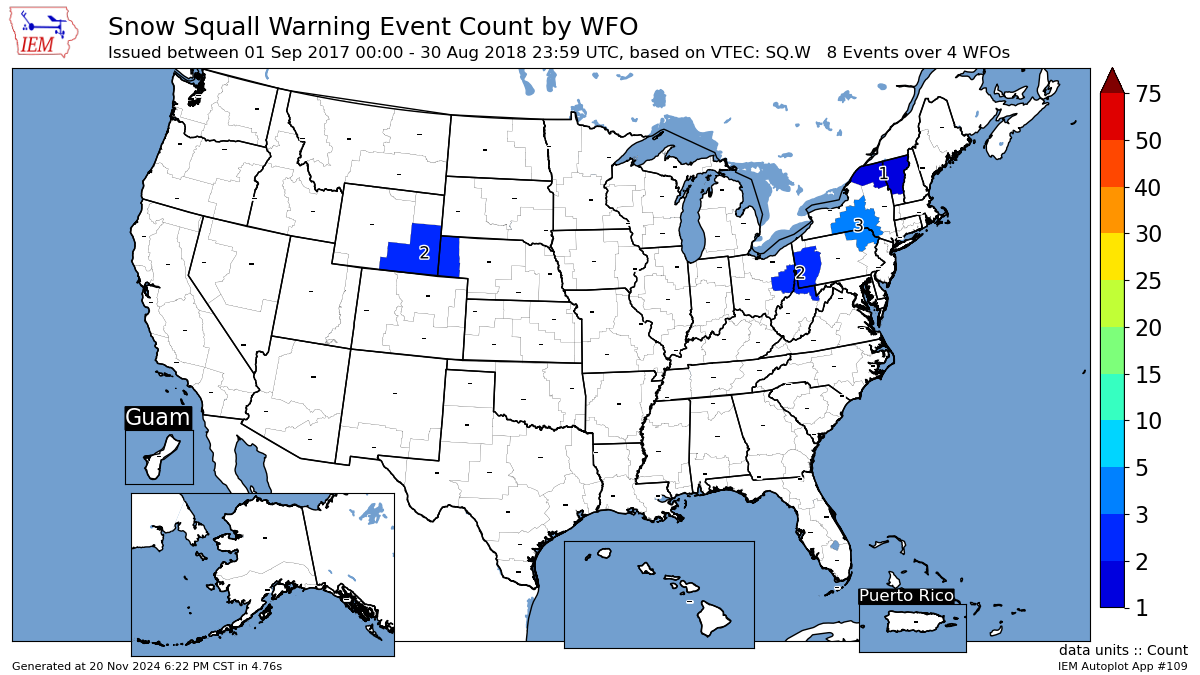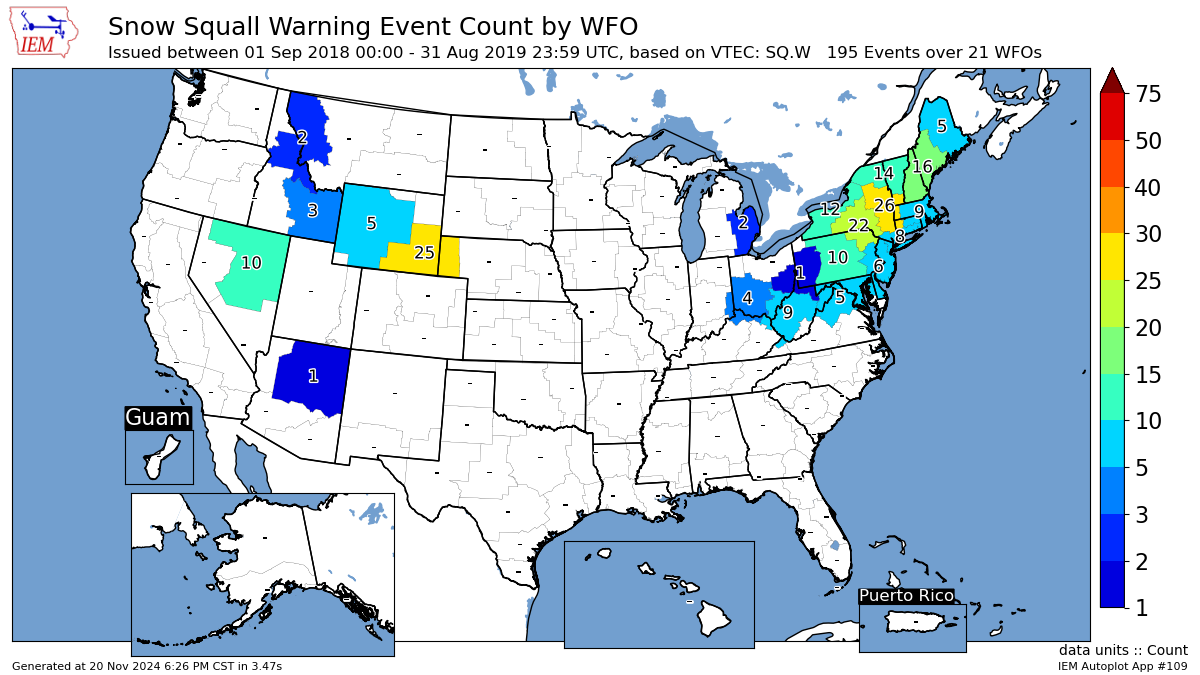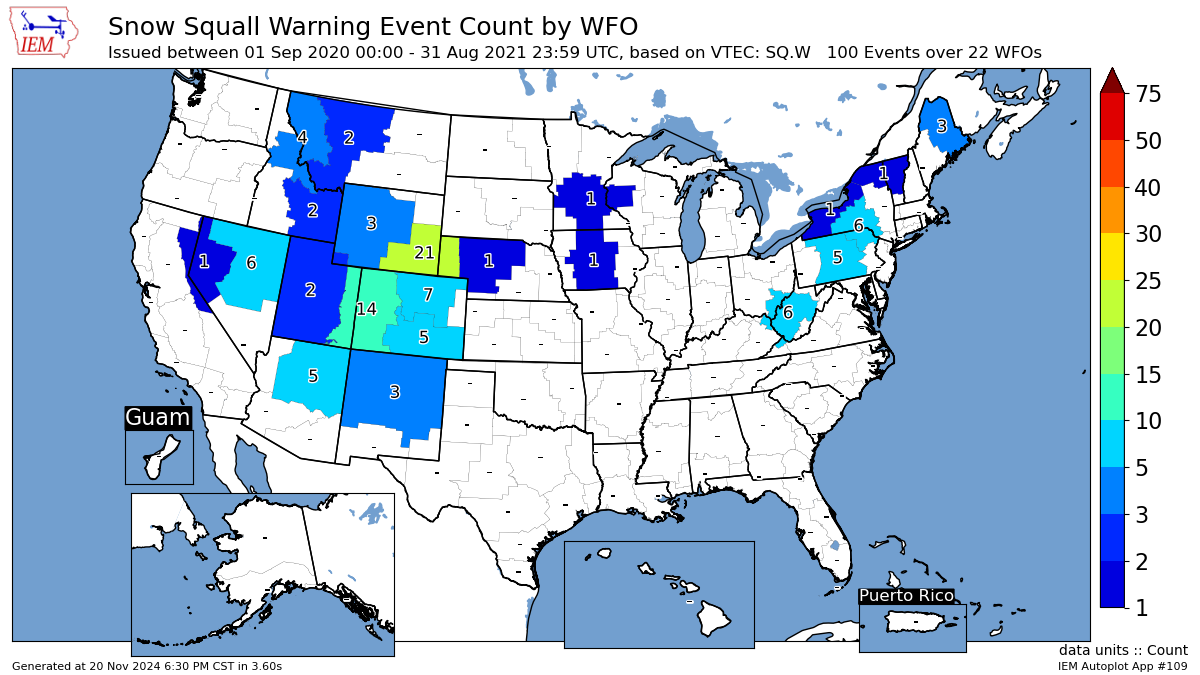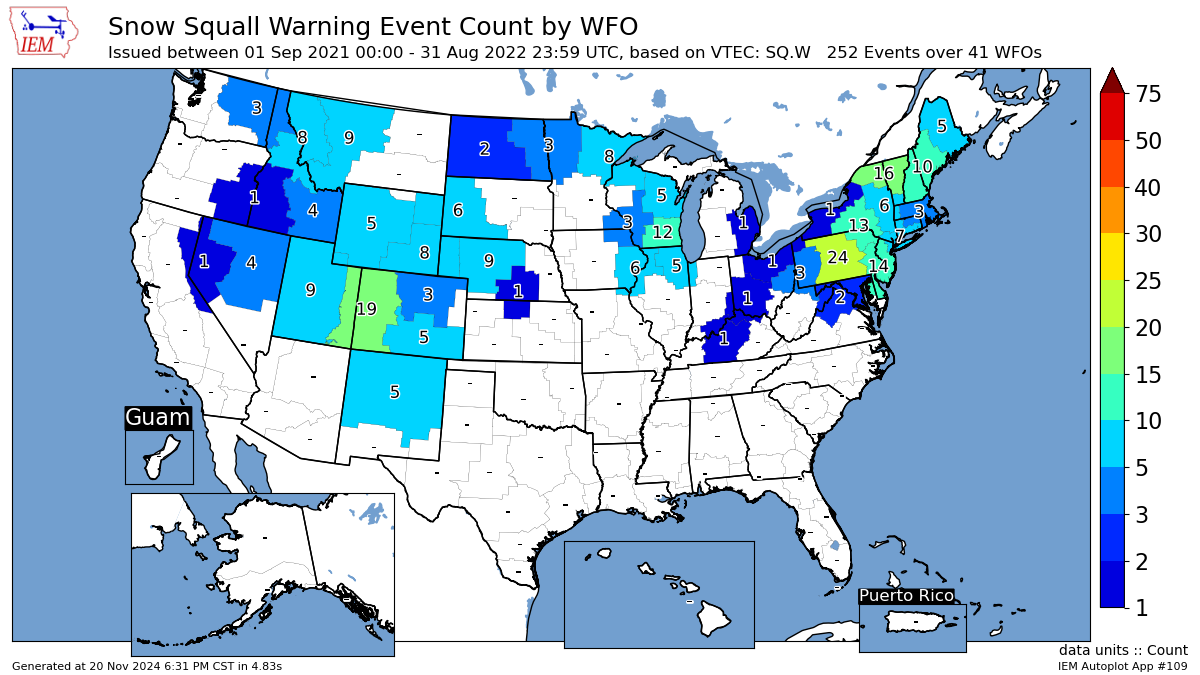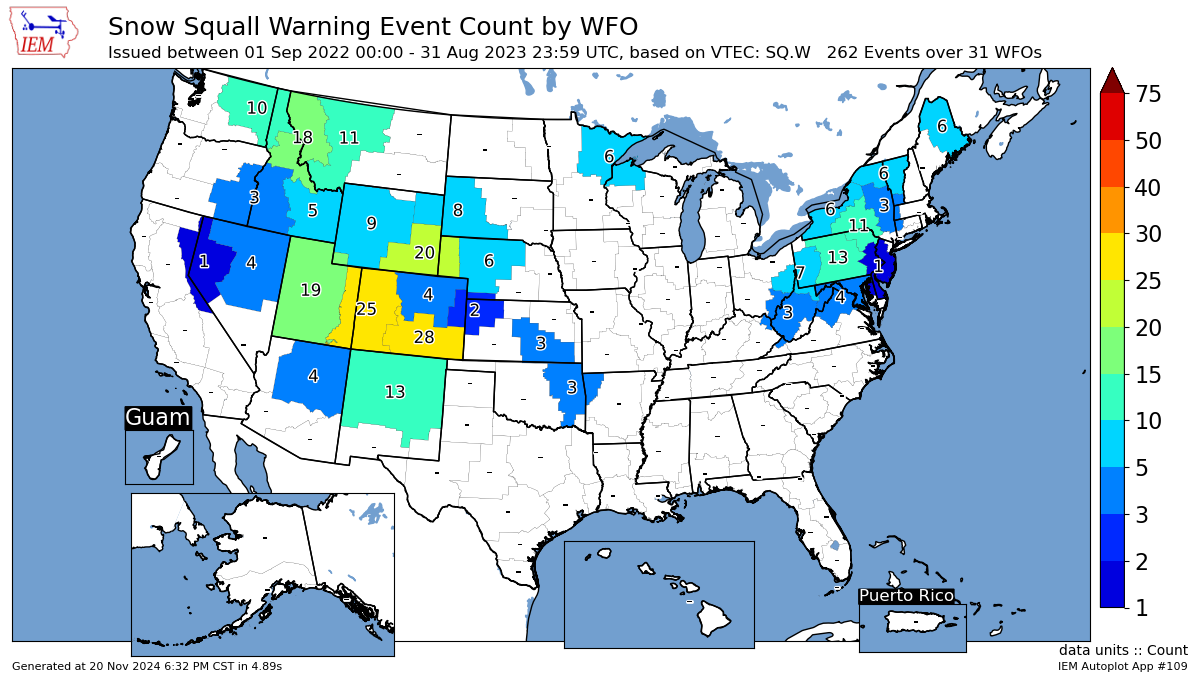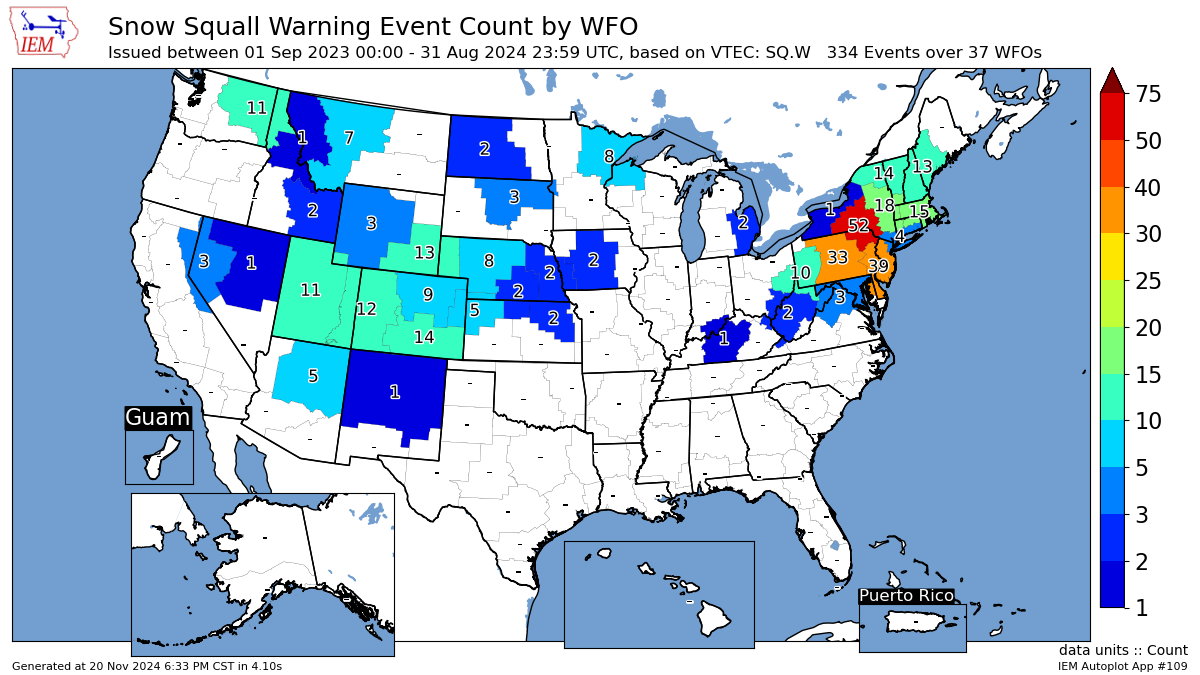Training & References - Snow Squalls and Snow Squall Warnings
Training & Case Studies
COMET / MetEd
Satellite Applications for Winter Weather: Snow Squalls
CLC
There are two main snow squall lessons on the CLC, both of which are part of WDTD's WOC Winter (be sure to take these on CLC to earn credit):
1.) Snow Squalls: Meteorological Considerations (reposted with updates, March 2023) - This module covers snow squall fundamentals, including snow squall dynamics, conceptual models, flash freeze, radar limitations, and application of a total observation concept.
2.) Snow Squall Warnings & Associated Operational Actions (Updated October 2022) - This module highlights actions to take at different forecast time scales, and covers decision making related to SPS/SQW and SQW with and without Wireless Emergency Alert activation. LSR issuance is also covered.
Note: If you were previously enrolled in WOC Winter (fall 2022 or earlier), the module below is still active, but will be removed for the fall 2023 course: WOC Winter 2022: Snow Squall Warnings: Part 1, Meteorological Considerations | Quiz
WES
WOC Winter Snow Squall Simulation (WFO CYS from Jan 27-28, 2019. Contact WDTD for discs - nws.wdtd.wocwinter@noaa.gov)
ArcGIS StoryMaps
WFO New York (12/18/2019) | WFO State College (11/11/2020) | WFO Burlington & WFO Gray (2/27/2022)
CASE STUDIES & PRESENTATIONS
Please contact a member of our team if you have a presentation from your office you'd like to share in the portlet below.
Snow Squall Case Studies and Presentations
Policy and Directives
Directive (10-513): WFO WINTER WEATHER PRODUCTS SPECIFICATION
Snow Squall IBW Tags One-Pager. This gives the WFOs better control over WEA notifications.
Snow Squall IBW Tags Software Timeline.
NWR and WEA: The base SQW will tone alert on NWR (except during "blackout" periods). The SQW issued with the "significant" tag will tone alert and go to WEA. When the SQW first went live, there was an initial press release about the NWR tone alerting that provides a few additional details. The WEA integration came later. WFOs should check with their BMH focal point to ensure warnings are configured correctly.
Papers
Banacos, P. C., A. N. Loconto, and G. A. DeVoir, 2014: Snow Squalls: Forecasting and Hazard Mitigation. J. Operational Meteor., 2(12), 130-151.
Banacos, P.C., G. A. DeVoir, B. Watson, A. N. Loconto, and D. J. Nicosia 2019: R2O: Development of NWS Snow Squall Warnings. Preprints, 9th Conference on the Transition of Research to Operations, Phoenix, AZ. Amer. Meteor. Soc..
DeVoir, G., 2004: High impact sub-advisory snow events: The need to effectively communicate the threat of short duration high intensity snowfall. Preprints, 20th Conf. on Weather Analysis and Forecasting/16th Conf. on Numerical Weather Prediction, Seattle, WA, Amer. Meteor. Soc., 10.2. [PDF]
Milrad, S. M., J. R. Gyakum, E. H. Atallah, and J. F. Smith, 2011: A diagnostic examination of the eastern Ontario and western Quebec wintertime convection event of 28 January 2010. Wea. Forecasting, 26, 301–318.
Lukinbeal, A. 2024: Western Montana Snow Squall Climatology and Synoptic Patterns, 2000–2020, J. Operational Meteor., 12 (2), 18-26, doi: https://doi.org/10.15191/nwajom.2024.1202.
Lundstedt, W., 1993: A method to forecast wintertime instability and non-lake effect snow squalls across northern New England. NOAA/NWS Eastern Region Tech. Attach. 93-11A, 7 pp.
Pettegrew, B. P., P. S. Market, R. A. Wolf, R. L. Holle, and N. W. S. Demetriades, 2009: A case study of severe winter convection in the Midwest. Wea. Forecasting, 24, 121–139.
SQW Issuance Statistics
Snow Squall Warning (SQW) counts by WFO (click images to enlarge)
Here's a look at all the Snow Squall Warnings (SQWs) issued by WFO from the start of the demonstration (cool season 2017-2018) through August 31, 2025:
|
Cool season 2017-18 (Demonstration at 6 WFOs only) |
Cool Season 2018-2019 |
Cool Season 2019-2020 |
|---|---|---|
|
Cool Season 2020-2021
|
Cool Season 2021-2022
|
Cool Season 2022-2023
|
|
Cool Season 2023-2024
|
Cool Season 2024-2025
|
Cool Season 2025-2026
|




